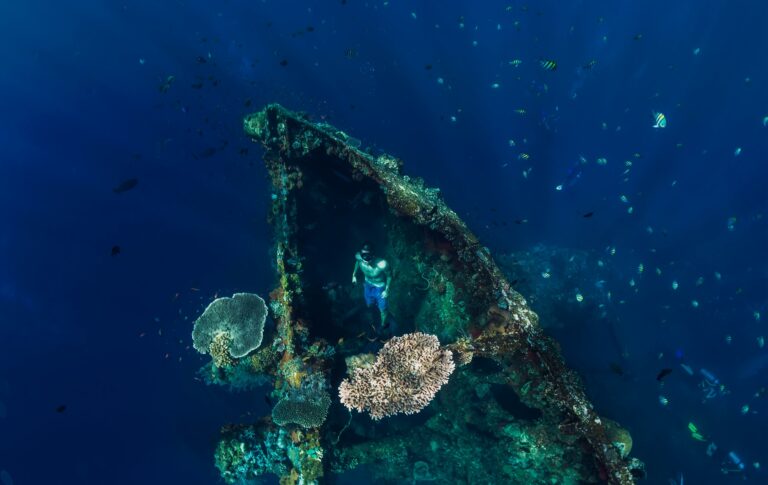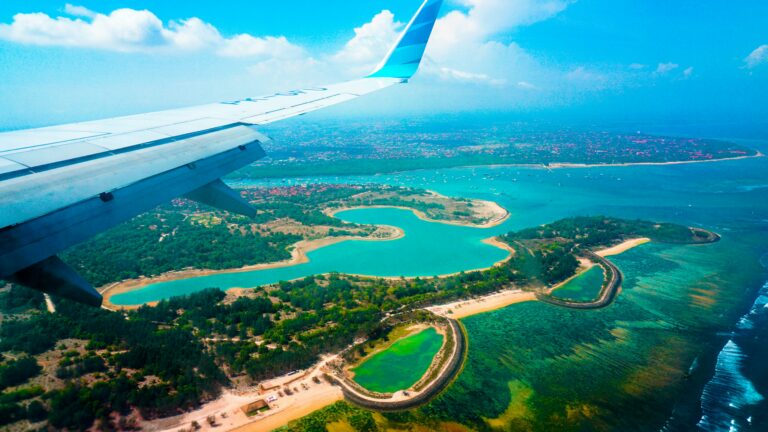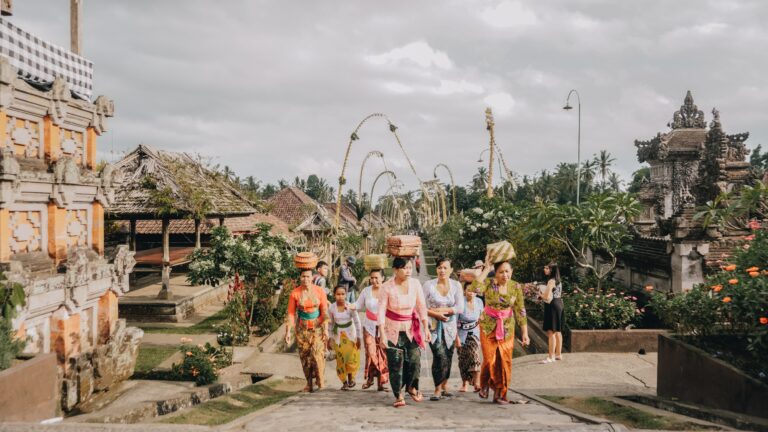Indonesia has the highest concentration of active volcanoes in the world. There are around one hundred and fifty of them. The islands of Sumatra and Java alone have more than seventy volcanoes! These volcanoes are part of the Pacific Ring of Fire, and this region experiences intense seismic and volcanic activity due to the collision of tectonic plates (the Pacific, Australian, and Eurasian plates) creating volcanic arcs and chains.
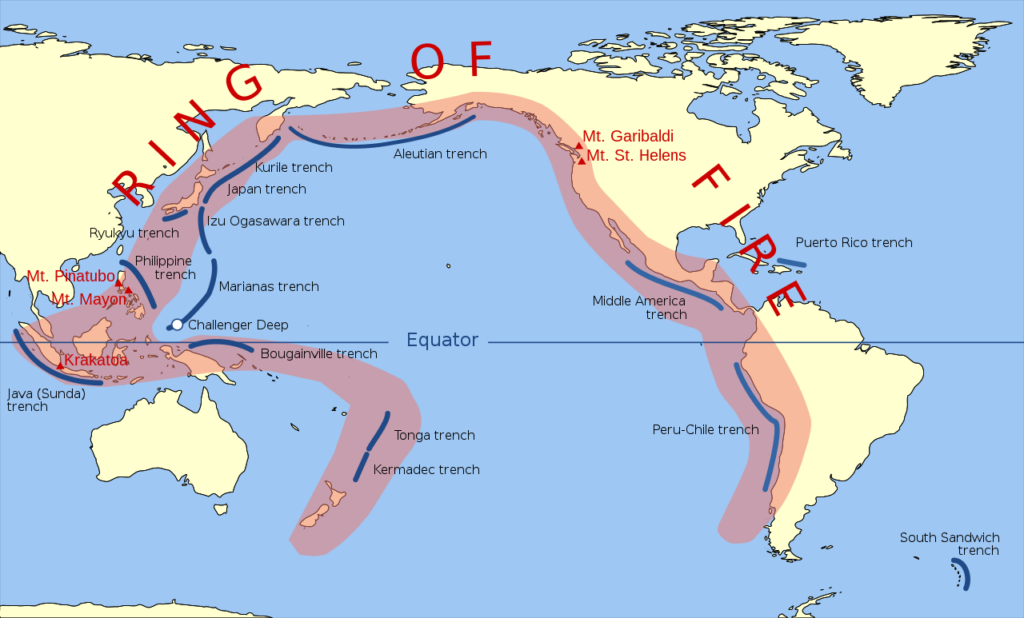
Volcanic Formation
The majority of Indonesian volcanoes form as a result of the Indo-Australian plate subducting beneath the Eurasian plate. This process leads to the creation of volcanic chains across the islands, characterized by their high eruptive potential. Over time, this geological activity has significantly shaped the region’s landscape and topography.
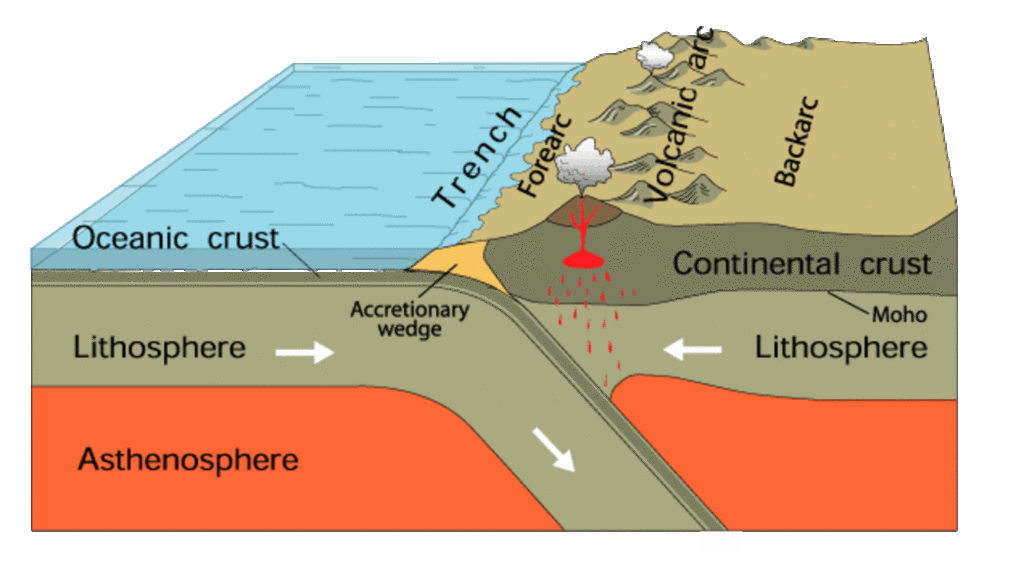
Indonesia’s Most Iconic Volcanoes
Mount Rinjani
At 3,657.6 meters, Mount Rinjani is one of Indonesia’s highest volcanoes. The jewel of the island of Lombok, the volcano is associated with the goddess Anjani, symbol of beauty. The last major eruption of Mount Rinjani took place a long time ago, in 1257.
Today, Mount Rinjani is popular with trekkers and hikers around its azure crater lake, Segara Anak. A three-day, two-night excursion is a popular hiking option. You’ll have enough time to walk to the crater rim and visit the crater lake, villages and hot springs. However, you can opt for a shorter two-day hike that requires good physical condition, or an even more relaxing four-day hike.
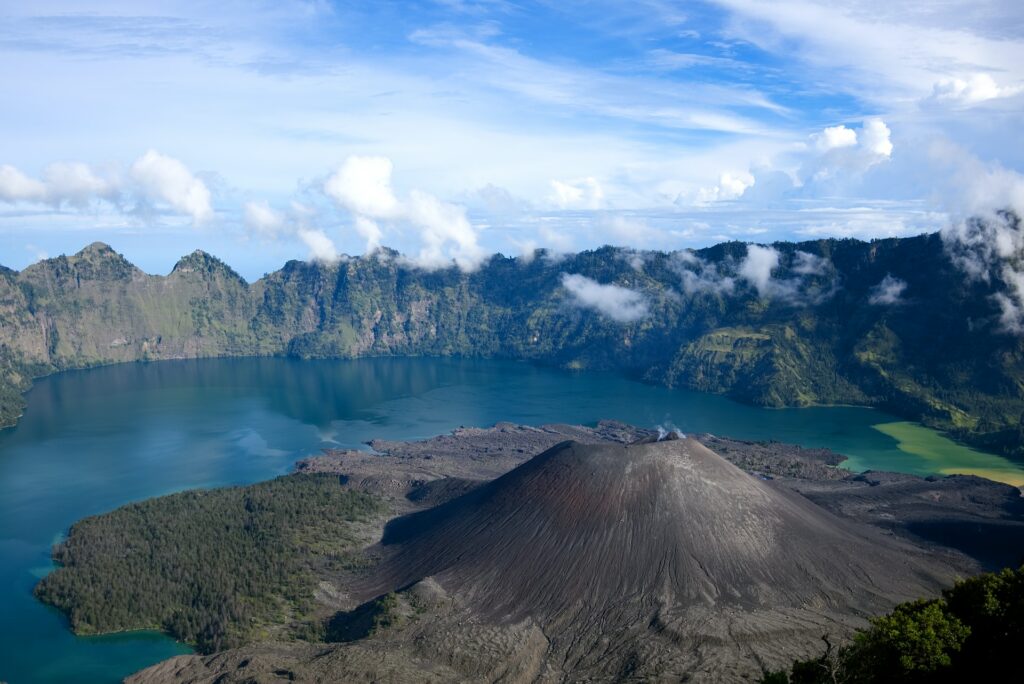
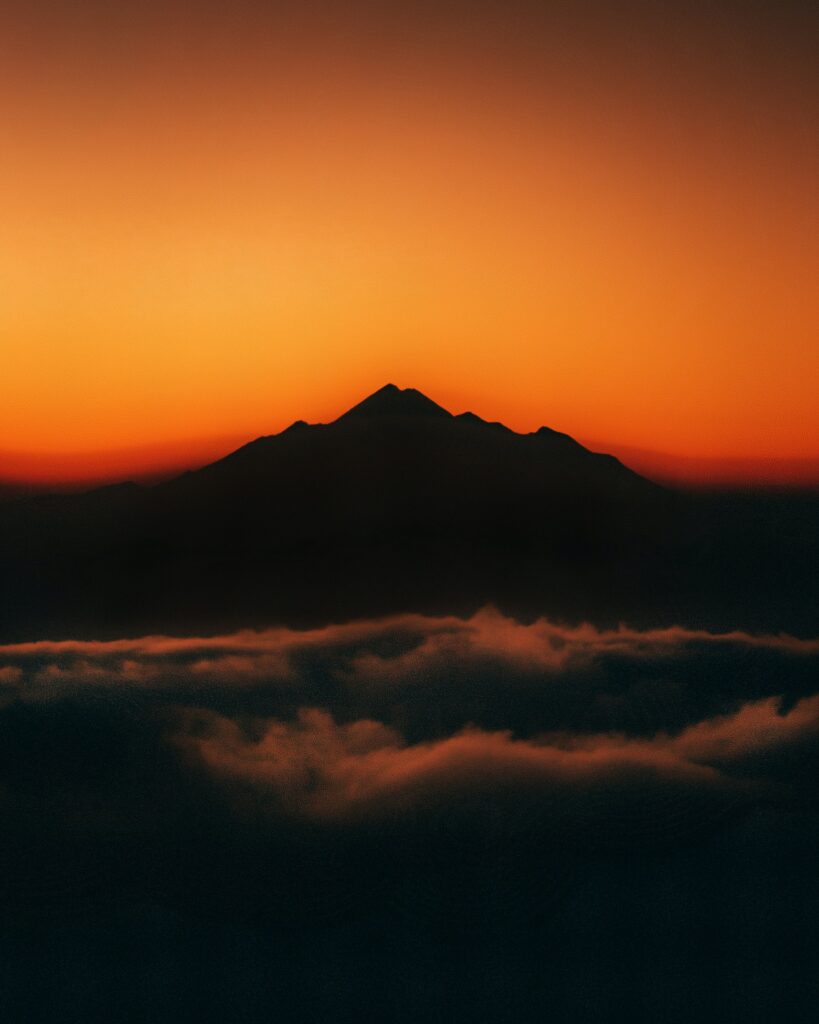
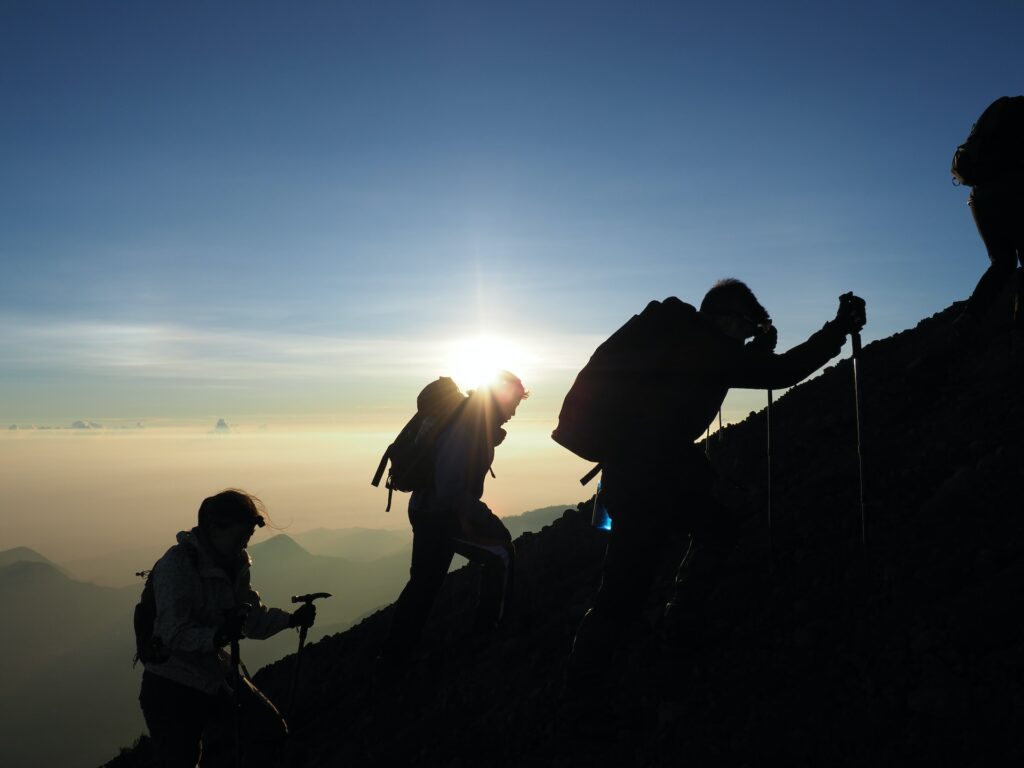
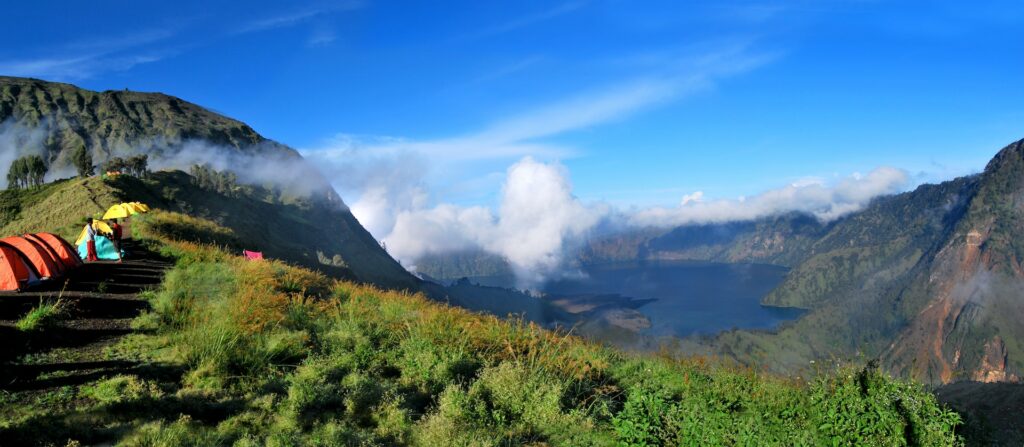
Mount Bromo
Mount Bromo is an active volcano located in the Tengger Massif region of East Java. It is one of the region’s most popular tourist attractions, enjoyed by visitors from East Java and beyond.
Part of the Bromo Tengger Semeru National Park, the term “Bromo” comes from the Javanese pronunciation of “Brahma“, the Hindu creator god. So, in addition to its spectacular views, this volcano has great religious significance for Hindus.
The eruption of Mount Bromo in 2016 was a landmark volcanic event for Indonesia. Although the eruption caused no direct fatalities, ash clouds caused temporary disruptions to air traffic and impacted the region’s tourism and agricultural sectors, highlighting the ongoing risks faced by communities living near active volcanoes.
However, thanks to our scientific advances and a better understanding of how volcanoes work, tourist visits to the region are now considered very safe. The safety and monitoring measures put in place effectively minimize the risks to visitors, illustrating how science is helping to reduce the potential dangers associated with such activities.
There are several ways to visit Mount Bromo. The first is to drive up in a jeep and watch the magnificent sunrise from the summit. If you’re feeling adventurous, you can also visit the Madarakipura’s waterfall, one of the most beautiful in Java.
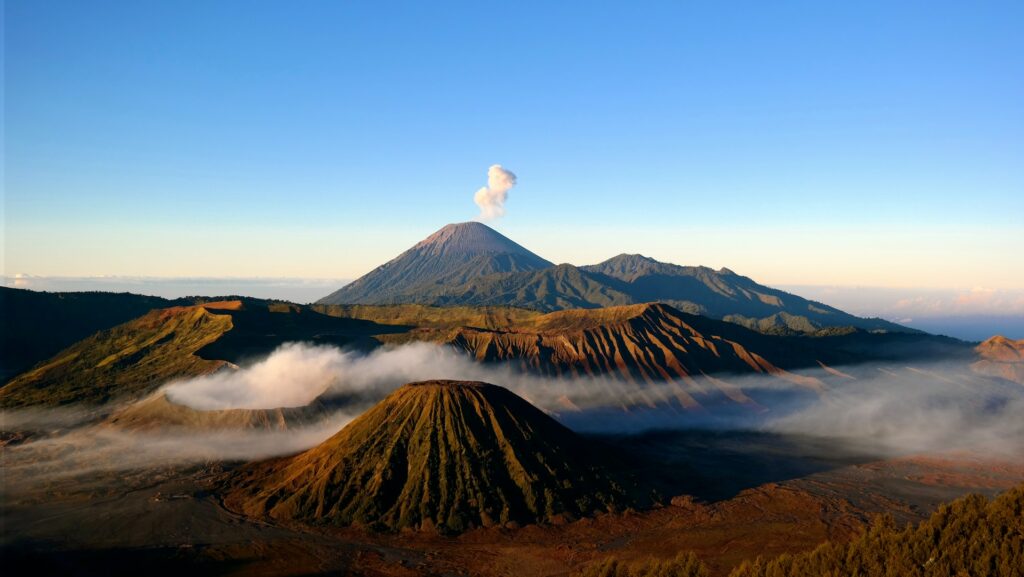
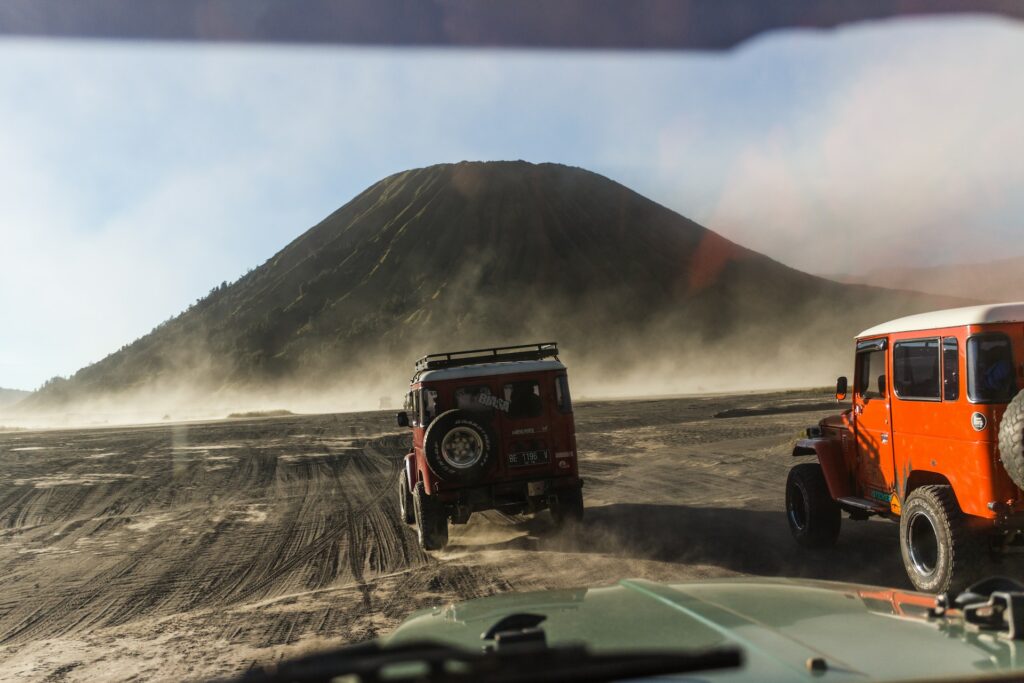
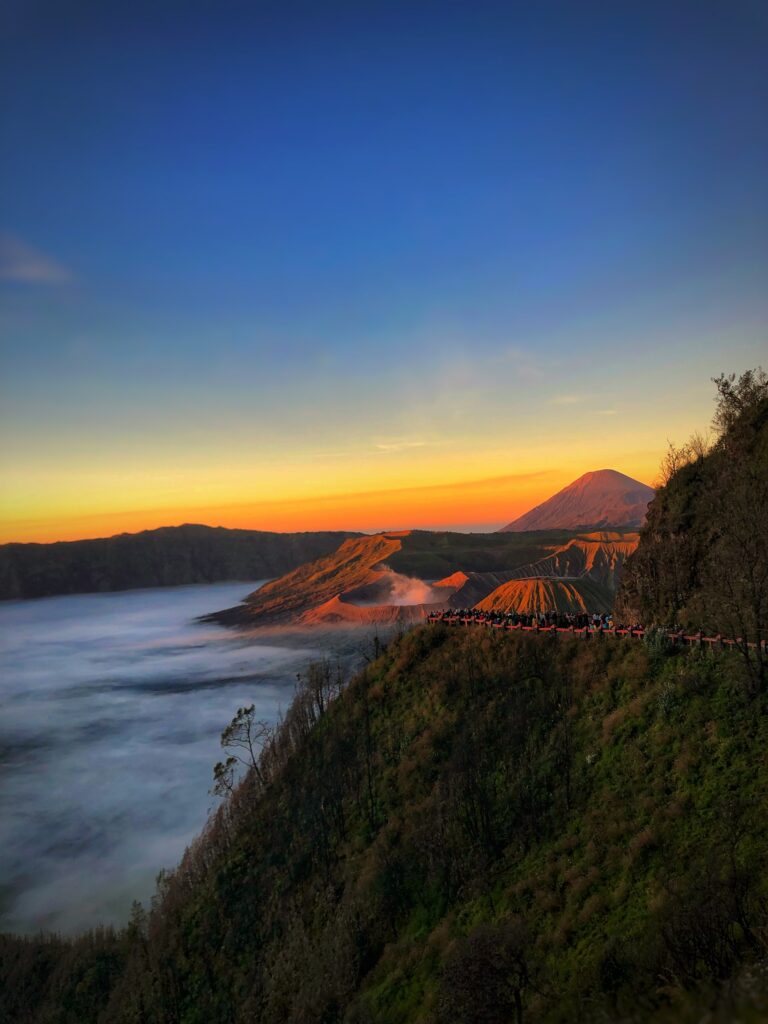
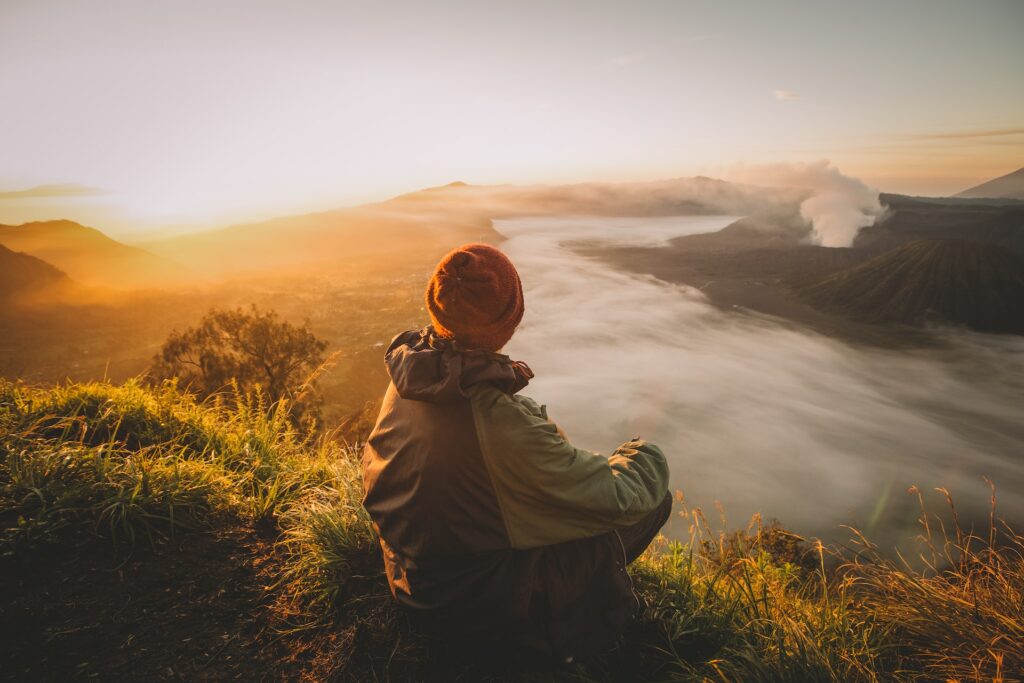
Mount Agung
Climbing Mount Agung is always an unforgettable journey for adventurers. This active volcano is considered a sacred site and offers breathtaking panoramas of Bali.
Because of their Hindu faith, the Balinese consider the mountains to be the abodes of the gods. Mount Agung is seen as the home of Mahadewa, the supreme representation of Lord Shiva, revered as the highest deity in their faith.
In 1963, Mount Agung’s eruption caused significant disruptions. However, today, the volcano is closely monitored by specialists. Technological advancements and a better understanding of volcanoes have considerably reduced the risks associated with visiting the site.
Adventurous travelers have two trekking options: opt for the crater rim or the summit (more difficult). For the best climbing conditions, we advise you to come between April and October. During this period, the views are clearer and the risk of precipitation is lower. It’s imperative to hire an experienced guide and ensure that climbers are in good physical condition. Essential equipment includes a headlamp and trekking pole, as well as clothing suited to the cold temperatures of the summit. The expedition starts at midnight and aims to reach the summit by sunrise.
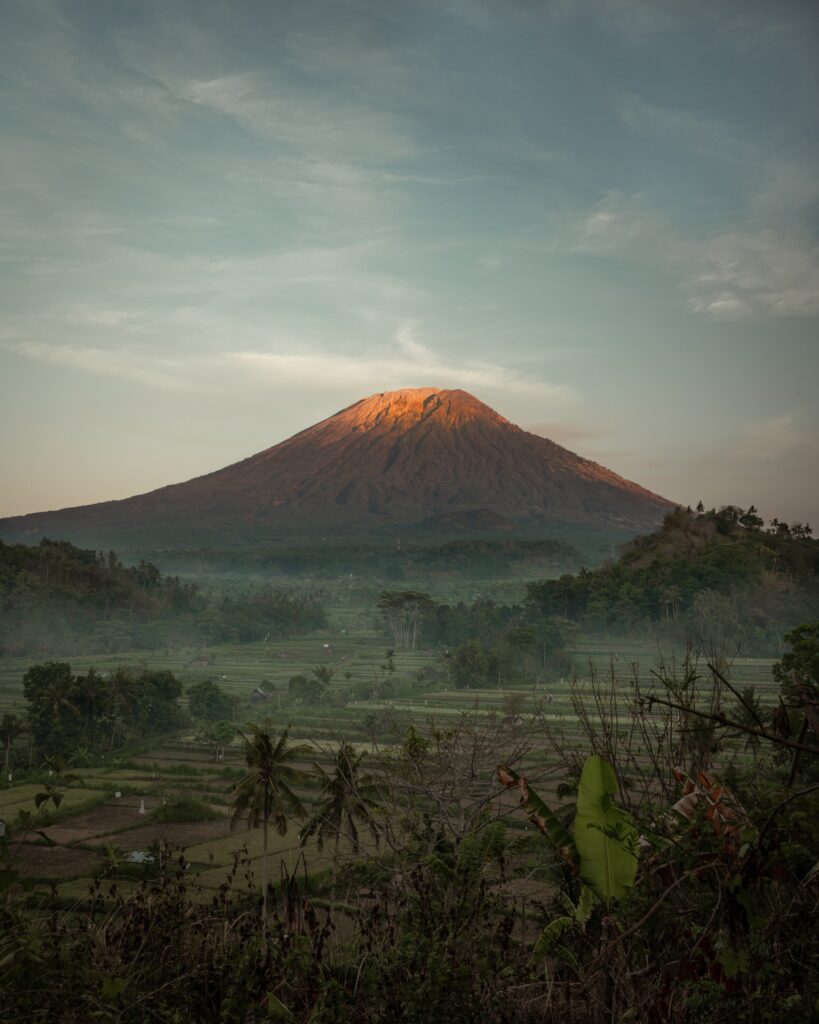
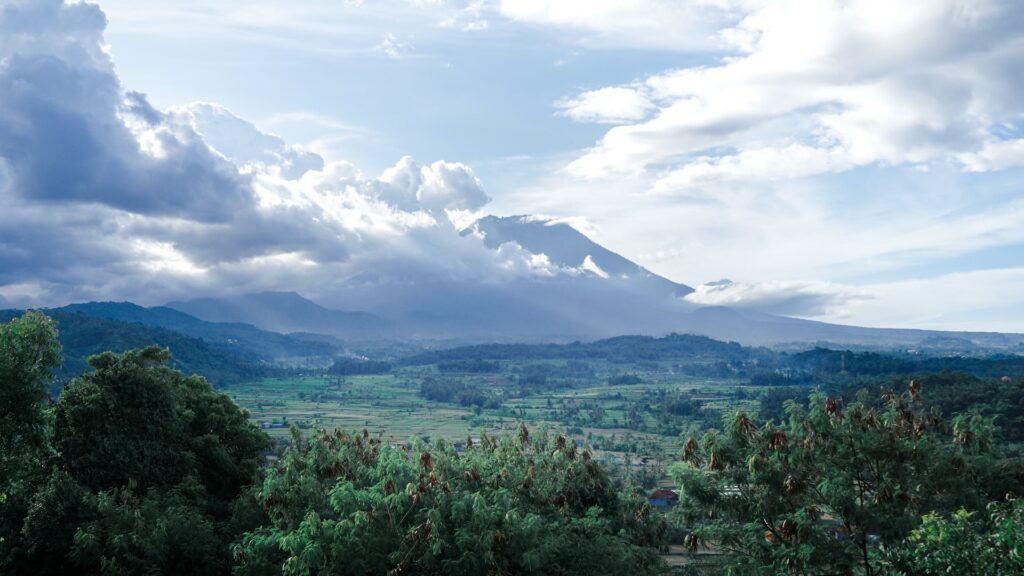
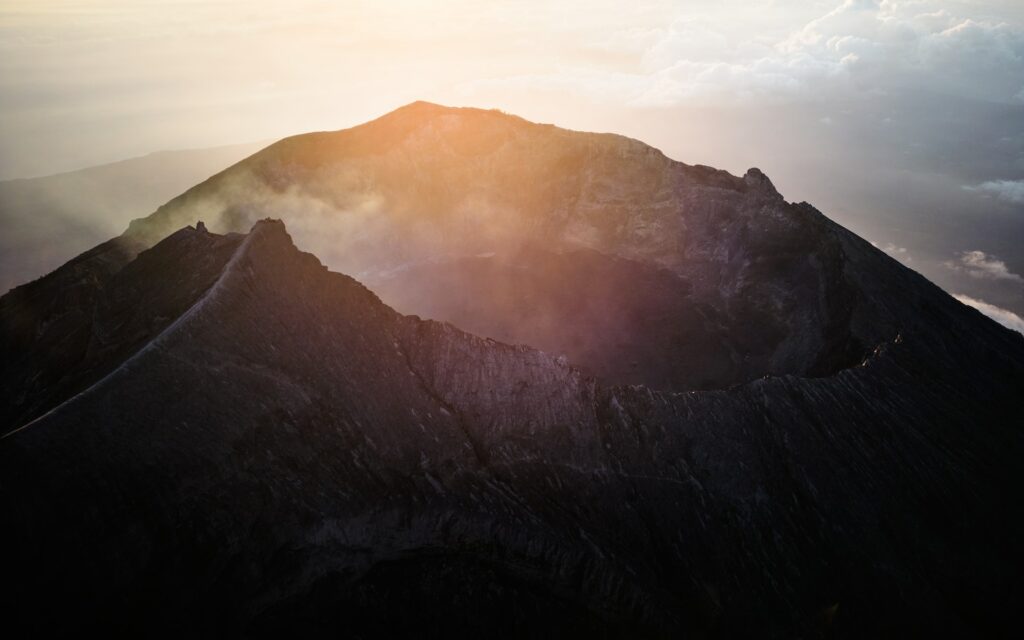
Kawa Ijen
The Kawa Ijen, is located on the island of Java in Indonesia. More specifically, it is located in the eastern province of Java, east of Banyuwangi and west of Bondowoso. Here you can see a brilliant blue lake, accompanied by a sea of clouds and a view of the “real” sea. The Kawah Ijen lake is considered to be the most acidic on the planet, with a PH of less than 0.5. In other words, it’s not a good idea to go diving there. It’s possible to see blue flames, due to the high concentration of sulfur there
You can also experience the reality of the situation as you watch miners hauling sulfur up on their shoulders. These workers can carry up to 90kg of material on their shoulders. Despite this sad reality, which shows the precariousness of the local population, it has to be said that Kawah Ijen is without doubt one of the most beautiful panoramas in Indonesia and surely one of the most beautiful sunrises you will ever see.

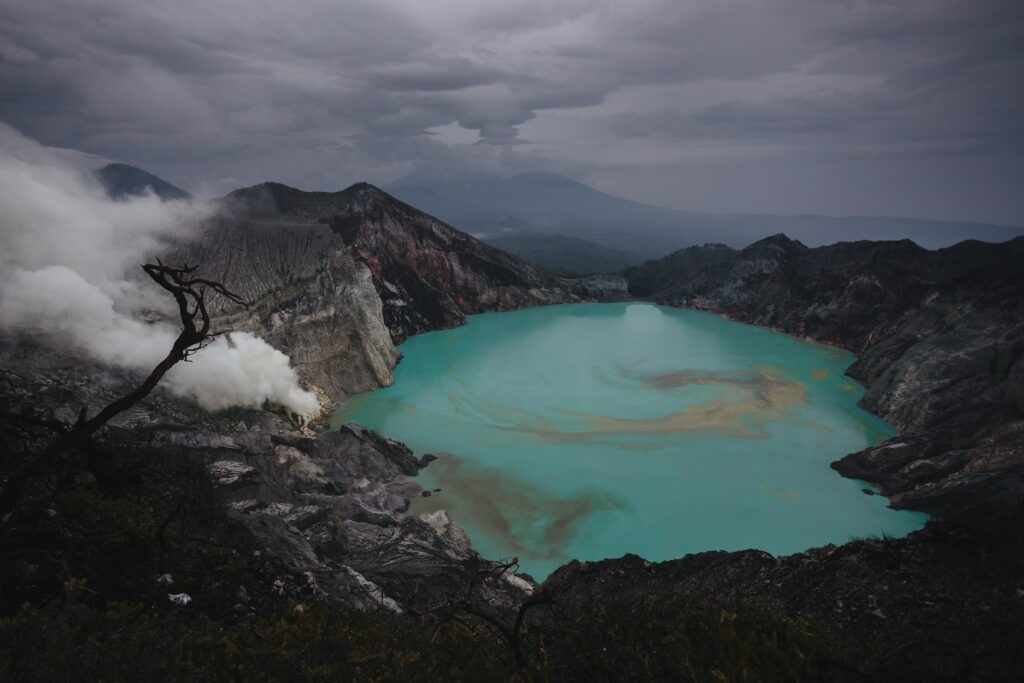
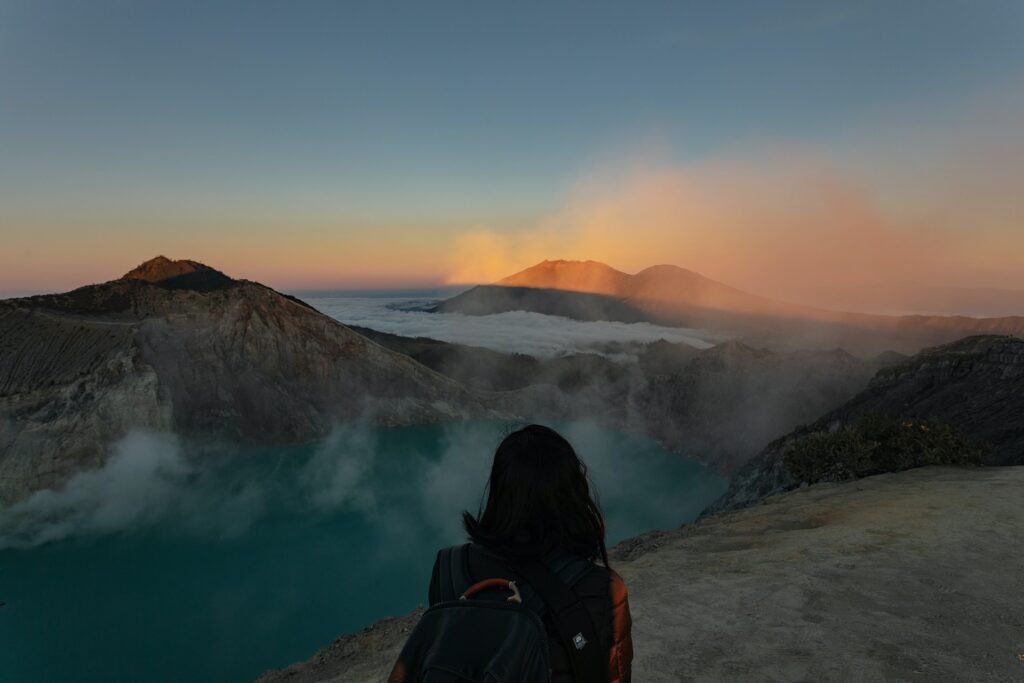
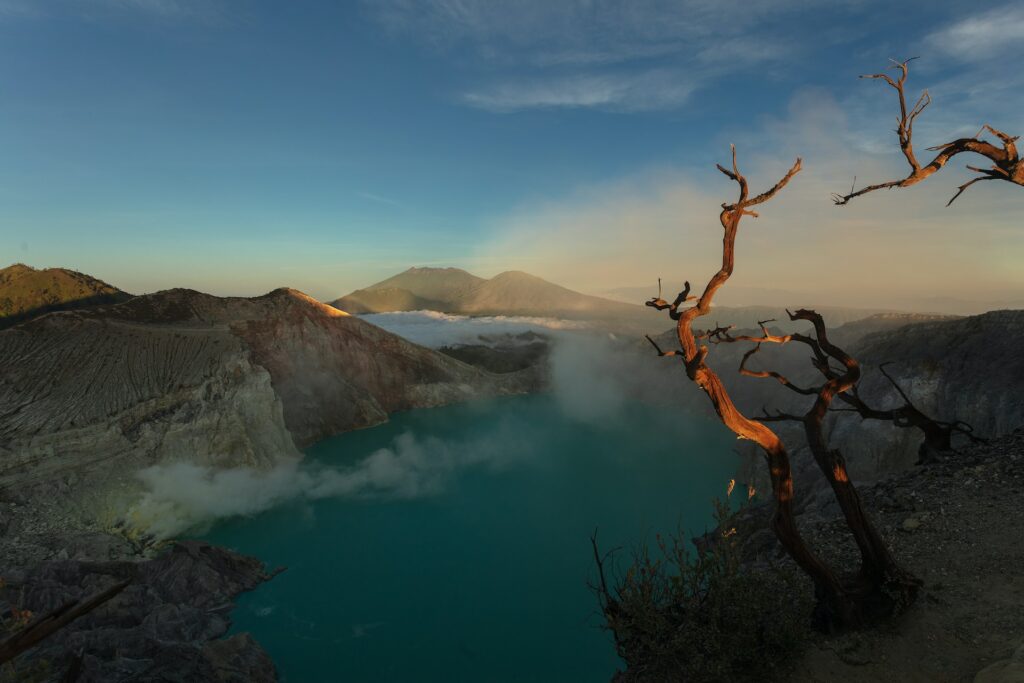
Krakatoa
This volcano has undergone continual change as a result of the many eruptions that have occurred over the course of its existence. Today, only a few remnants of the original island remain, and the landscape is constantly changing.
In 1883, the volcano erupted with an appalling noise, the loudest ever heard on Earth, and the clouds produced by the catastrophe could be seen as far away as the skies over Northern Europe. The 1883 eruption was one of the deadliest in history, claiming tens of thousands of lives. It caused the volcano to destroy the majority of the island, which collapsed into its caldera. Approximately 40 years later, Anak Krakatau (child of Krakatoa), broke the ocean surface and rose to 300 meters above the surface.
In December 2018, a spectacular collapse of the southwestern side of the volcano caused a violent tsunami that struck the northern tip of Java and the South of Sumatra.
The best time to visit Krakatao during the dry season, from May to October. The climb to the summit takes just under 2 hours, with a fairly flat ridge halfway up, offering splendid views of the island of Rakata and the surrounding islands. From this vantage point, you can also admire the rugged black volcanic cone and observe the sulfurous gases escaping from the earth. Thanks to advances in science, visiting Krakatoa is considered relatively safe, as signs of possible volcanic activity can now be detected in advance.
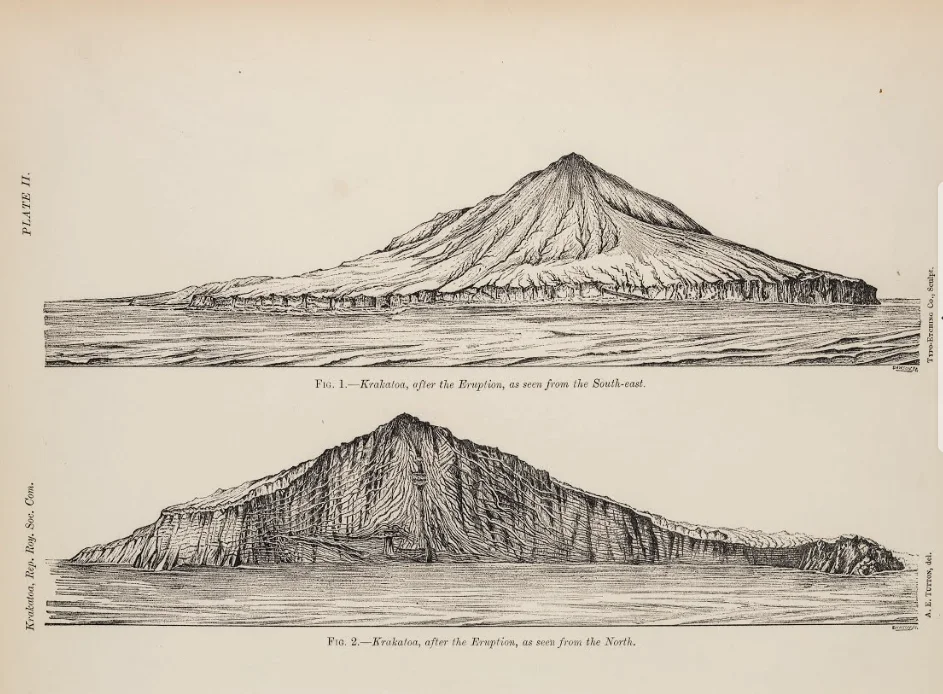
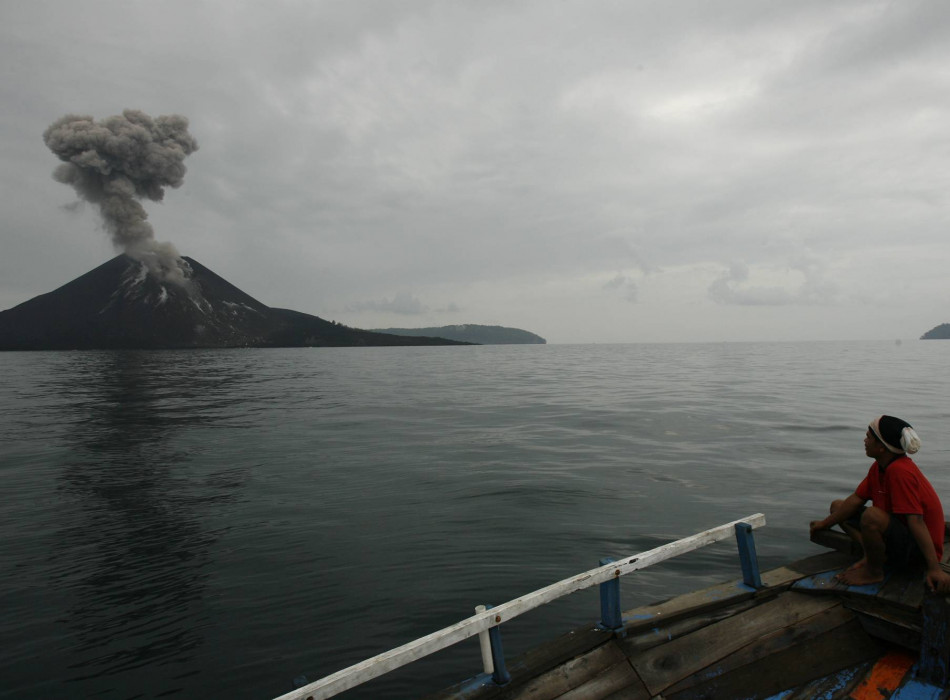
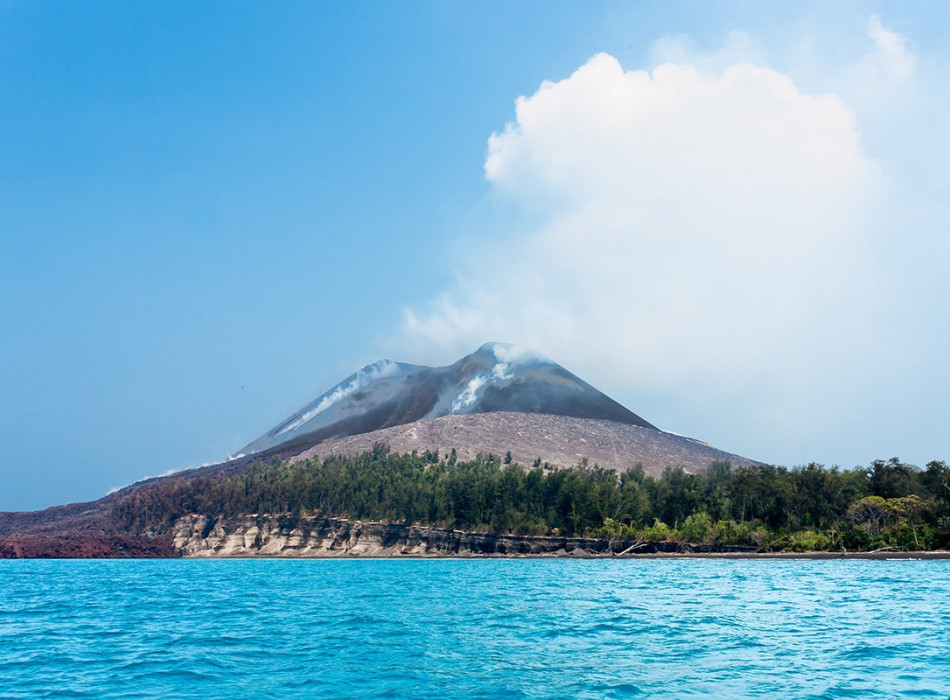
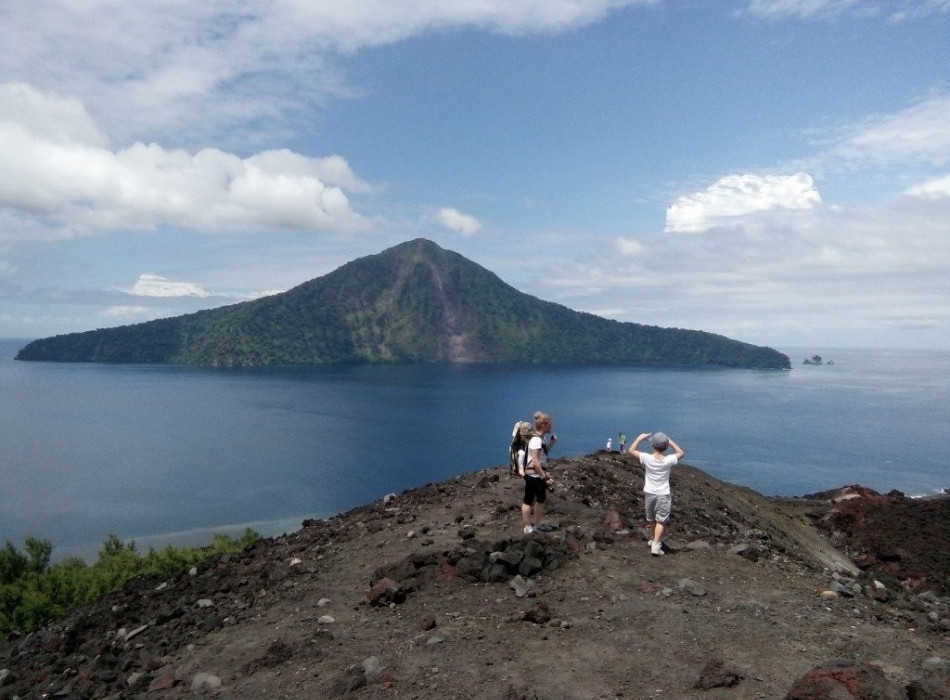
Mount Tambora
Mount Tambora is an active stratovolcano, culminating at 2,851 meters above sea level, and is the highest peak on the island of Sumbawa.
The eruption of Tambora in 1815 is considered one of the most significant in volcanic history. The catastrophe left a deep impression on the local population, as well as on regions of the world such as China and Europe, which saw their harvests seriously affected by the climatic changes that followed the eruption.
Today, the visit is more than safe as the volcano’s is closely monitored. This beautiful mountainous region has been granted national park status in Indonesia and has become one of the country’s top tourist destinations. On arrival, you can choose between two commonly used routes to climb Mount Tambora: Pancasila and Doro Ncanga.
Each of these routes offers a unique experience of beauty: the Pancasila trail passes through superb pine forests and remarkable natural scenery, while the ascent via Doro Ncanga allows you to enjoy the splendour of savannah landscapes.
The Pancasila route starts the ascent from an altitude of 450 metres, stretching 25 km to the summit. For the Doro Ncanga route, climbers use an all-terrain vehicle, such as a 4×4 jeep, to access an altitude of 1500 meters from which the ascent to the summit begins.
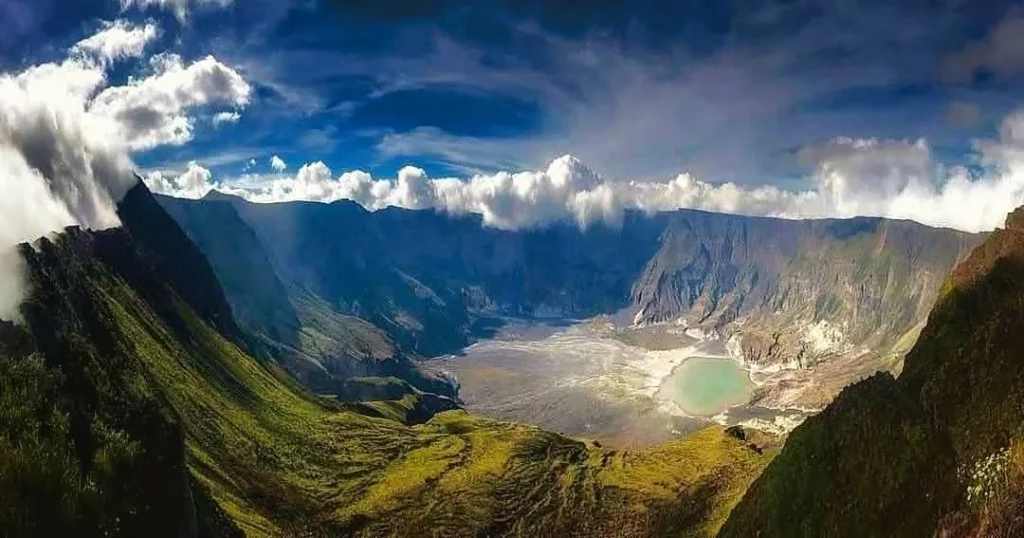
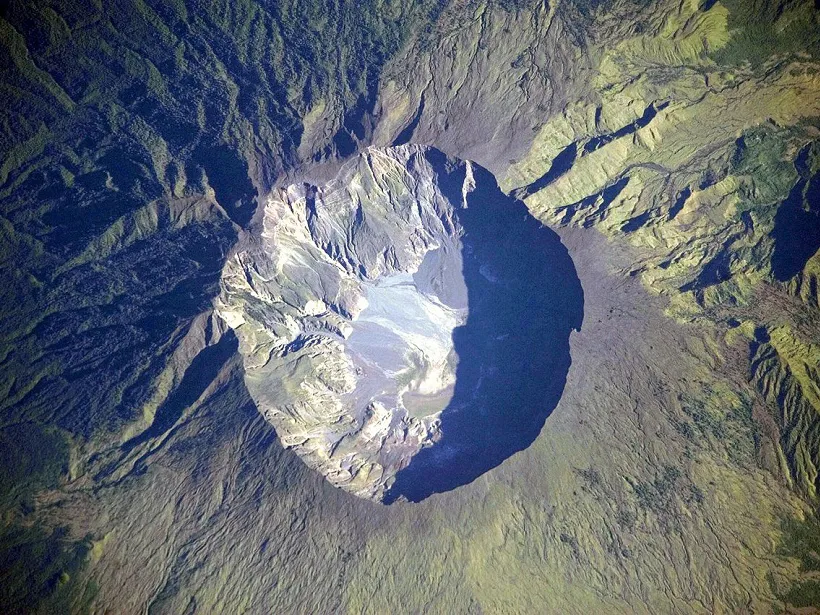
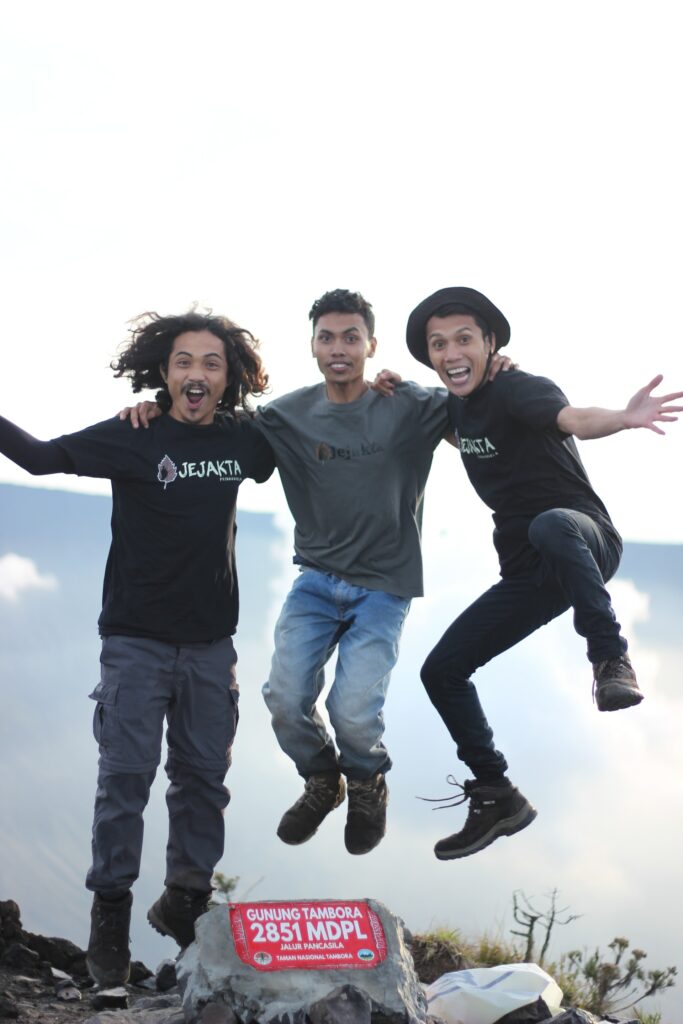
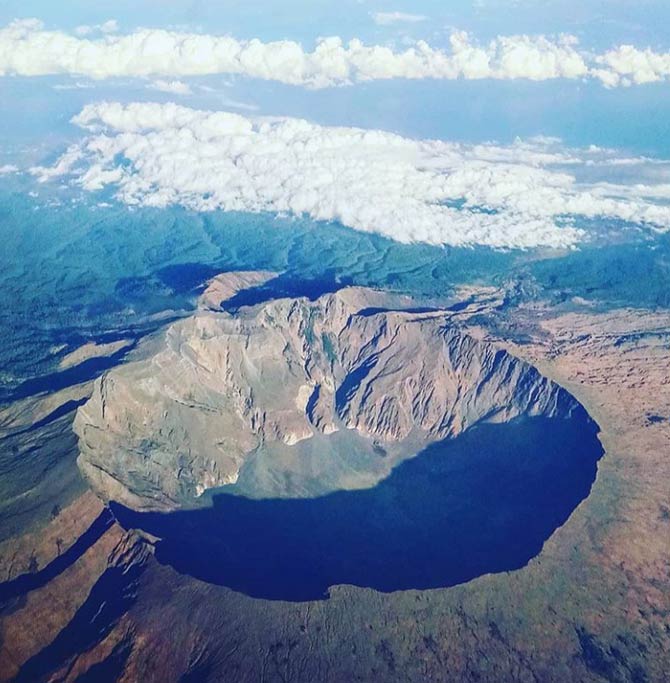
Managing Volcanic Risks in Indonesia
Communities residing near active volcanoes face persistent threats, prompting Indonesian authorities to institute protective measures. These initiatives involve educating locals on safety protocols during eruptions and implementing evacuation plans for imminent dangers. Despite these efforts, the potential repercussions of volcanic activity continue to raise significant concerns.
To address these risks, Indonesia utilizes sophisticated technology to monitor volcanic activity, enabling swift responses and preventive measures. Insights gained from historical volcanic events, such as the 1883 Krakatoa eruption, have enhanced these preparedness strategies. Continuous vigilance and understanding of volcanic activity remain pivotal in safeguarding lives and heritage in the region.
Ready for a Volcanic Adventure in Indonesia?
Indonesian volcanoes are fascinating and attract travelers worldwide, even though they pose some risks. With careful watch and extra safety, exploring these volcanic lands is still an amazing and memorable adventure. If you would like to see these wonders of nature for yourself, get in touch with us and let us know what you’d like to do, so we can build the trip of your dreams.

